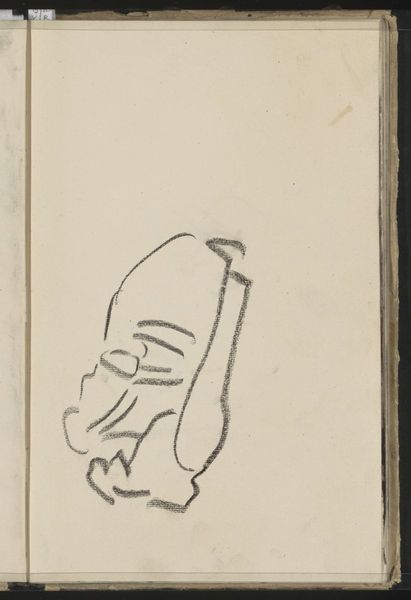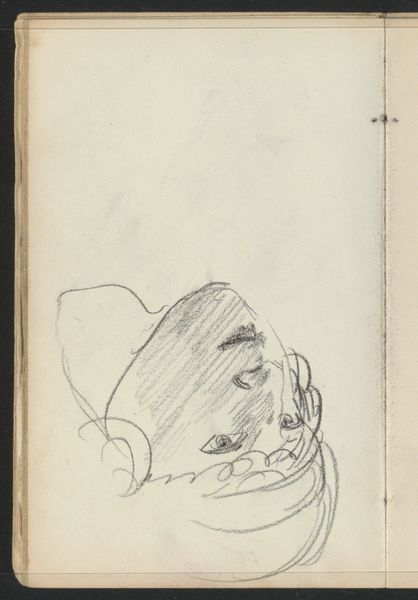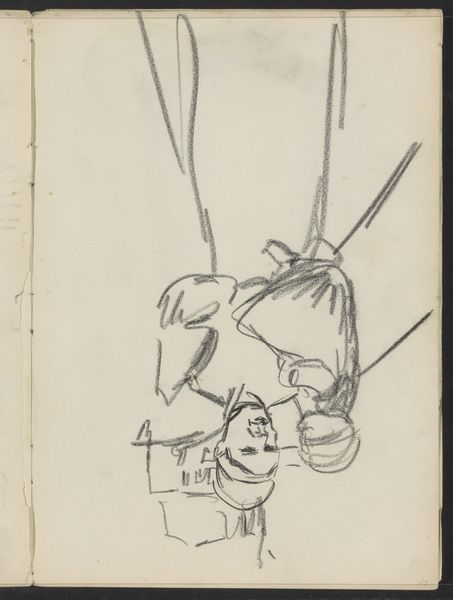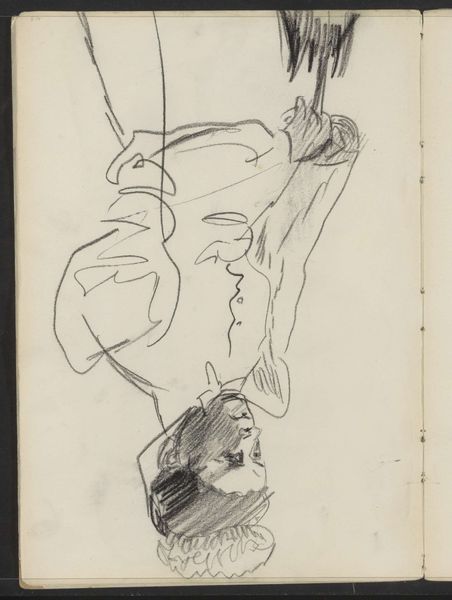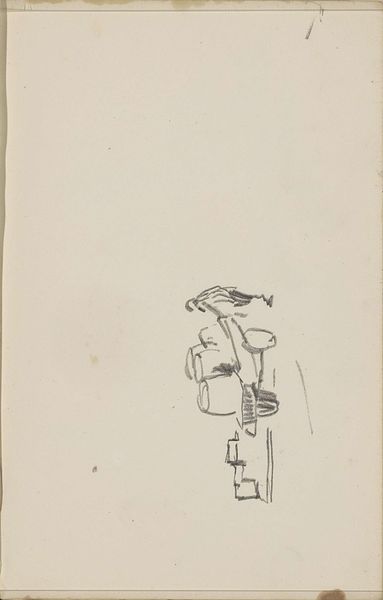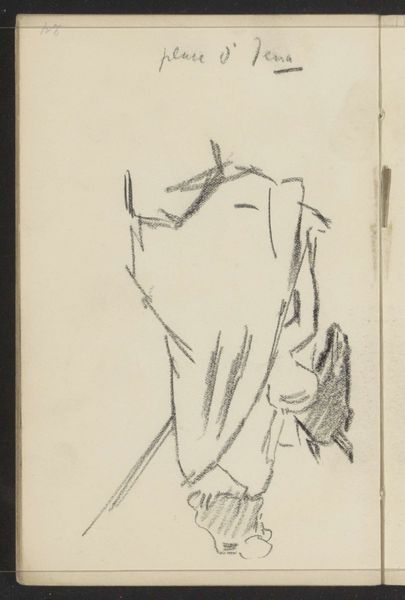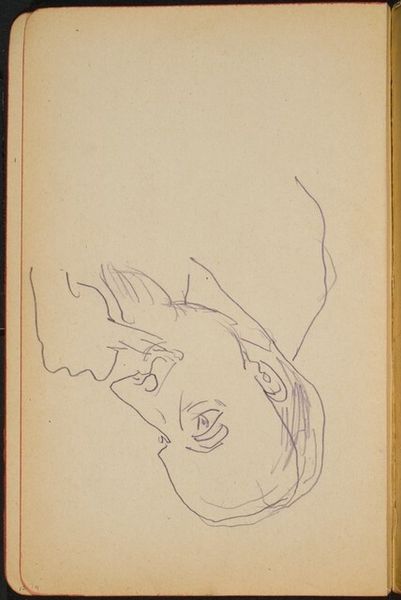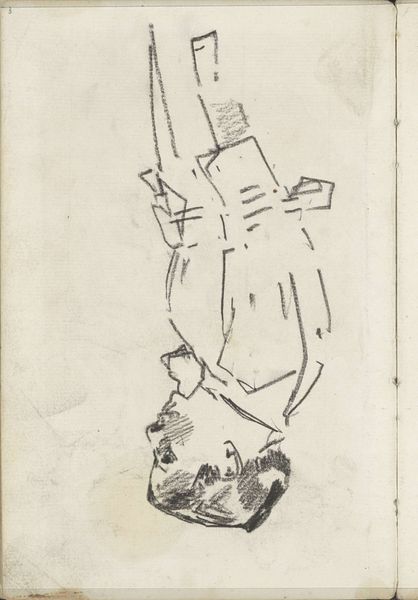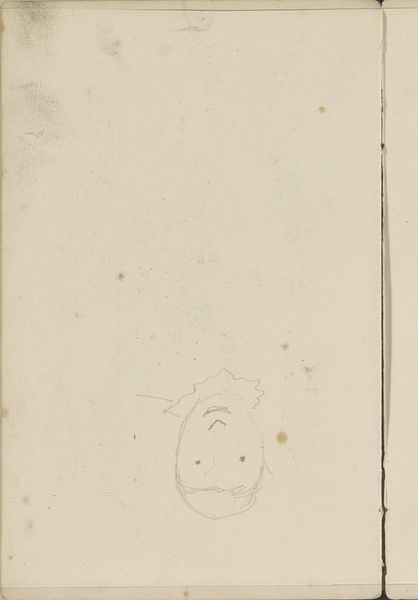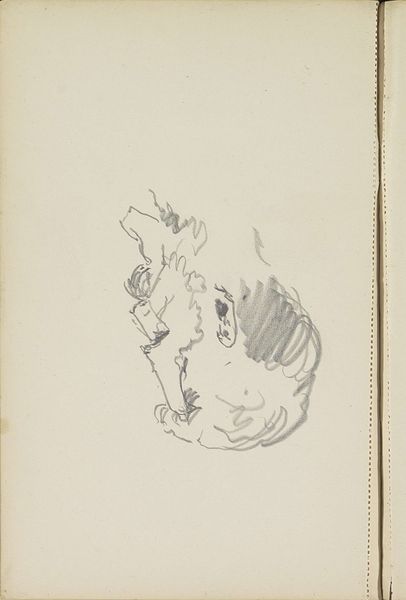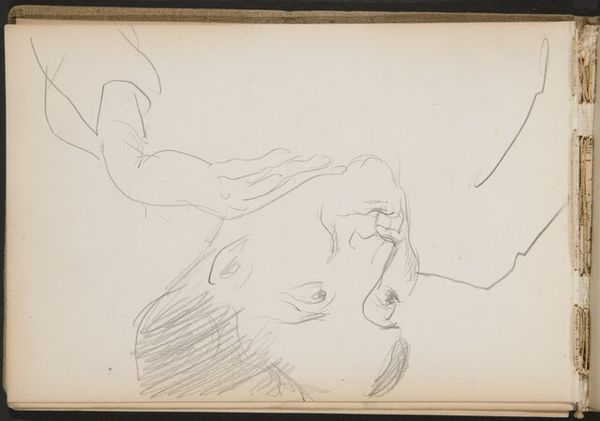
Copyright: Rijks Museum: Open Domain
Editor: Here we have Isaac Israels' "Vrouwenhoofd met muts," or "Woman's Head with a Cap," made sometime between 1887 and 1934. It's a pencil and pen drawing. The sketchiness almost makes it feel unfinished, and yet there's a striking immediacy. What catches your eye when you look at it? Curator: The hurried quality is intriguing. It feels like a glimpse into a private moment. The cap, though just lines, suggests status, perhaps connecting to the visual language of Dutch Golden Age portraits, where attire signified societal role. Does this woman embody echoes of the past, brought into the rapidly modernizing world Israels inhabited? Editor: I hadn't thought about the connection to the Golden Age! But it’s definitely there in the formality implied by the cap, even with the loose style. It's like Israels is hinting at tradition while embracing impressionism. What about the choice of medium? Does that contribute to the symbolic reading? Curator: Absolutely. The pencil and pen—tools for quick notation—lend the drawing a transient quality, hinting at fleeting encounters and the ephemeral nature of modern life. The hatching creates depth, but also a sense of unease, of something unresolved. Consider how those stark, dark eyes stare back. Do they unsettle you? What secrets do they hold? Editor: They do draw me in! It's as if she’s staring through you. And now I'm wondering if the lack of color amplifies that feeling...like we’re looking at a ghost. Curator: Precisely! Israels uses the absence of color to evoke a powerful presence. It's a poignant study, interweaving social commentary with an intimate psychological portrayal. I will certainly think about that next time I see it! Editor: Thanks for this fascinating reading, thinking about symbols really unlocked so much!
Comments
No comments
Be the first to comment and join the conversation on the ultimate creative platform.
